Stack v Dowden [2007] 2 All ER 929; 2 AC 432
Judgement for the case Stack v Dowden
KEY POINTS
The principle of Common Intention Constructive Trust should be applied to determine the beneficial interests in the jointly owned property.
The intentions of the parties involved can evolve over time, leading to what is commonly referred to as an "ambulatory constructive trust" during legal arguments.
In the context of consumer transactions within a household, when a property is transferred into joint names, it is presumed that both the legal and beneficial ownership is held as joint tenants, unless there is evidence to prove otherwise.
It was accepted by the parties that both had a beneficial share - the question was the size of respective shares. Plaintiff tried to claim 50% of the house. HL awarded him 35%.
It is rare to find unmarried couples who have lived together for such a long time, had children together, and kept their financial matters completely separate, like this particular couple did. These factors strongly suggest that they did not intend to have equal shares in the property, even though it was registered in both their names.
FACTS
Mr. Stack and Ms. Dowden were in a cohabiting relationship for almost 18 years and had four children together. They purchased a house in London, which was registered in both of their names. However, they did not specify their respective shares in the property on the Land Registry Form.
The purchase was primarily funded by selling a house that belonged solely to Ms. Dowden, her savings, and a joint loan, with her contributing 65% of the purchase price. Throughout their relationship, they maintained separate finances, including bank accounts, savings, and investments.
After nine years of living in the house, their relationship ended, and they reached a court agreement that had Mr. Stack leave the property while Ms. Dowden remained there with the children.
Mr. Stack wanted the house to be sold, and he believed that the money from the sale should be divided equally between him and Ms. Dowden. However, Ms. Dowden disagreed and said that the division of ownership should be based on how much each of them had contributed to the house financially.
COMMENTARY
In legal matters, the specific context plays a crucial role, and it is important to recognize that the domestic context differs significantly from the commercial realm. Each case is unique and will be determined based on its individual circumstances.
Numerous factors, beyond mere financial contributions, can be significant in understanding the true intentions of the parties involved.
ORIGINAL ANALYSIS
Plaintiff and Defendant owned a house in both of their names whose mortgage was paid off 65% by Defendant and 35% by Plaintiff. It was accepted by the parties that both had a beneficial share - the question was the size of respective shares.
Plaintiff tried to claim 50% of the house. HL awarded him 35%. HL held that where a domestic property is conveyed into both cohabitants’ names without a declaration of trust, there is a prima facie presumption that both the legal and beneficial interests in the property were joint and equal.
The burden of evidence was on the party trying to rebut the presumption. Such a party had to prove that the parties had held a common intention that their beneficial interests be different from their legal interests, and in what proportions.
In order to discern the parties' common intention the court should look at the parties' whole course of conduct in relation to the property and the law was no longer limited to looking at direct financial contributions (i.e. it has moved on from the doctrine of resulting trust).
However, it would be hard to rebut the prima facie presumption. The presumption was rebutted on the unusual facts of the case (Defendant over the course of the marriage had always contributed far more money in every respect of family life than Plaintiff, including paying household bills etc.).
Lord Hope
In cases where single legal ownership is assumed, the burden is on the party claiming to have a beneficial interest.
In cases of assumed joint legal ownership, the onus is on the party claiming that the shares of ownership are not to be equal.
Lord Walker
Lord Bridge’s doubt as to anything less that direct financial contributions will do in Lloyds Bank v Rosset was contrary to the dictum of Lord Diplock in Gissing and is widely criticised. “The presumption [of a 50-50 split in joint ownership cases i.e. where the house is in both parties’ names] will be that equity follows the law.”
-
In Oxley v Hiscock the law moves towards the position of HL in this case, since Chadwick LJ said that the parties would be “entitled to that share which the court considers fair having regard to the whole course of dealing between them in relation to the property.”
Lord Neuberger dissented on this point, arguing that the court could not do as was ‘just’, as Chadwick LJ said in Oxley
Baroness Hale
All that is needed for an common intention constructive trust to arise is a common intention that both parties should have a beneficial share. This intention can be ‘implied, actual or imputed’.
“Just as the starting point where there is sole legal ownership is sole beneficial ownership, the starting point where there is joint legal ownership is joint beneficial ownership. The onus is upon the person seeking to show that the beneficial ownership is different from the legal ownership.”
In seeking to overturn the burden, all conduct in relation to the property is considered: NOT solely direct financial contributions. The reason for the strength of the presumption is that, following break up of relationships, parties tend to reinterpret the past in vengeful ways and misrepresent the nature of the relationship’s arrangements.
RELATED CASES
For Further Study on Stack v Dowden
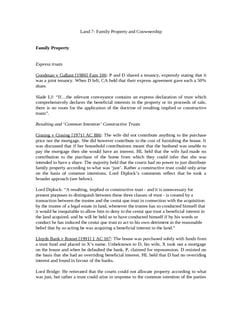
Land Law notes fully updated for recent exams at Oxford and Cambridge. ...
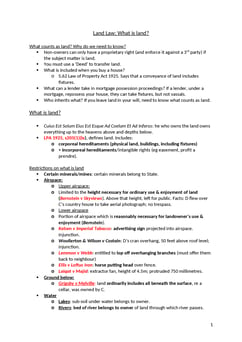
A collection of the best GDL notes the director of Oxbridge Notes (an O...
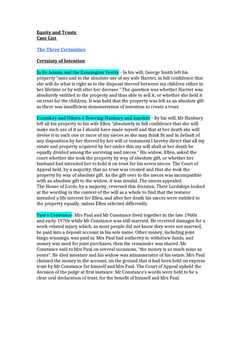
A collection of the best GDL notes the director of Oxbridge Notes (an O...
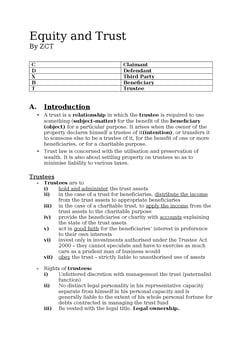
Equity notes fully updated for recent exams at Oxford and Cambridge. Th...
Need instant answers? Our AI exam tutor is here to help.
Ask questions 🙋 Get answers 📔 It's simple 👁️👄👁️
Our AI is educated by the highest scoring students across all subjects and schools. Join hundreds of your peers today.
Get StartedRelated Product Samples
These product samples contain the same concepts we cover in this case.
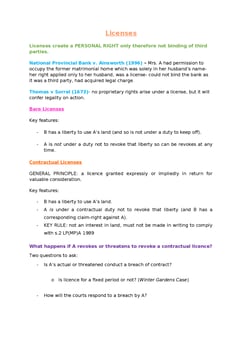
 Since 2010, Oxbridge Notes has been a trusted education marketplace, supplying high-quality materials from top achievers at universities like Oxford, Cambridge, LSE, Harvard, and Yale.
Since 2010, Oxbridge Notes has been a trusted education marketplace, supplying high-quality materials from top achievers at universities like Oxford, Cambridge, LSE, Harvard, and Yale.